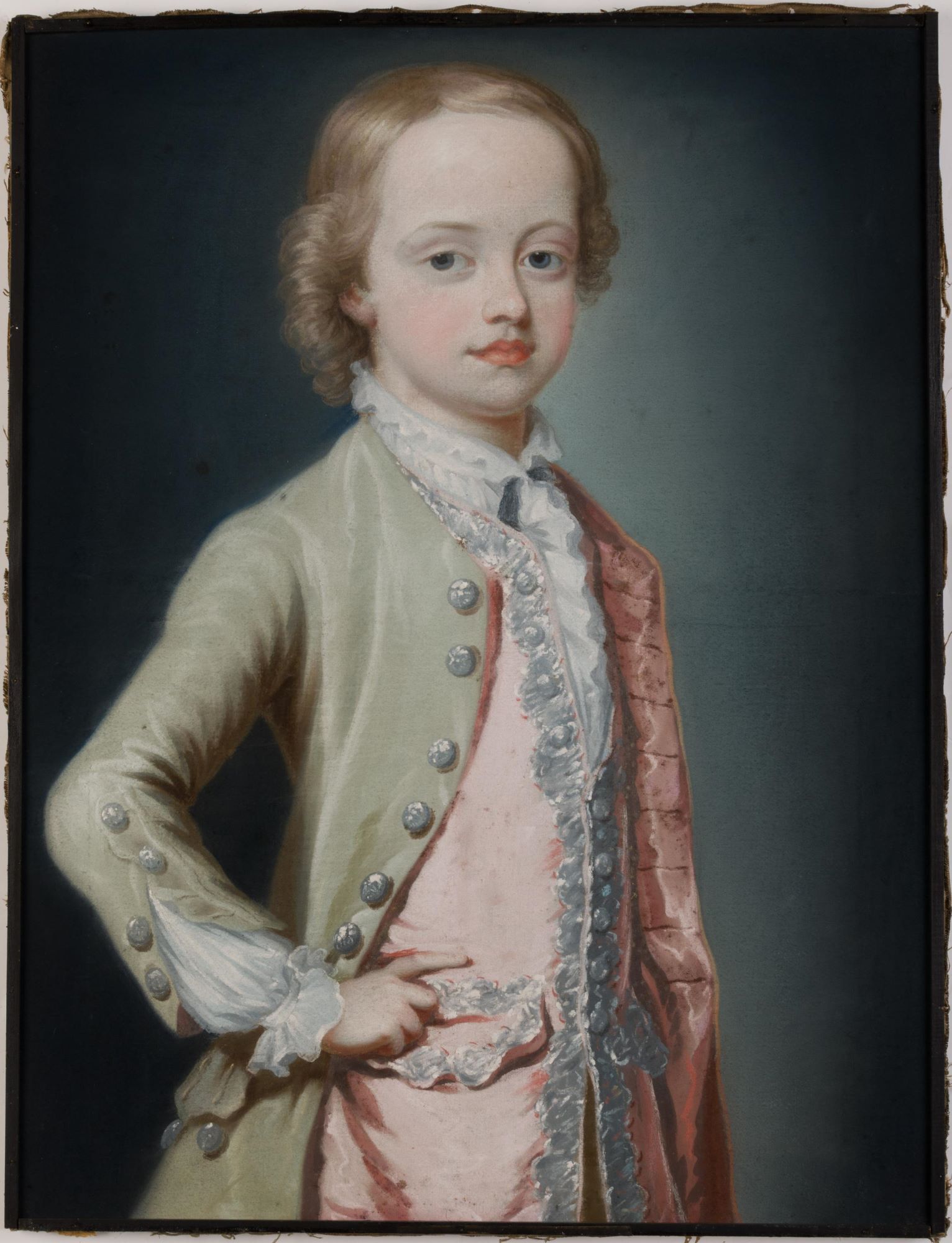Portrait of the Hon. William Napier, three-quarter length, wearing a Green Silk Coat
Portrait of the Hon. William Napier, three-quarter length, wearing a Green Silk Coat
2782
George Knapton, R.A. (1698-1768)
Portrait of the Hon. William Napier, three-quarter length, wearing a Green Silk Coat
Pastel on paper
55.8 by 40.7 cm., 22 by 16 in.
Provenance:
Dr Robert Hemphill;
By whom sold Christie's, London, 12th November 1991, no. 18;
Private collection, UK.
Literature:
Neal Jeffares, Dictionary of Pastellists before 1800, online edition, J.432.172
William Napier (1730-1775) was the son of Sir William Scott, 2nd Baronet of Thirlestane (c.1670-1725), a Scottish lawyer and landowner. William succeeded his ftather as 7th Lord Napier. He entered the army in 1747, joining the Scots Greys, and attained the rank of major in 1770. However, in 1773, he was forced to sell his commission due to ill health. He was appointed Deputy Adjutant-General of forces in Scotland, with the rank of Lieutenant-Colonel, a role he held until his death. In 1773, Napier became Lord Napier of Merchistoun and on his death the title passed to his son, Francis (1758-1823).
In December 1754, Napier married Mary Anne Cathcart (1727-1774), fourth daughter of Charles Cathcart, 8th Lord Cathcart and in addition to Francis they had four daughters. Lady Napier died just six months before her husband.
George Knapton, came from a prosperous family. In 1715, he was apprenticed for five years to Jonathan Richardson Snr.
He undertook an extended visit to Italy between 1725 and 1732, before returning to England and establishing himself as a portrait painter. He worked in both oils and pastel and although he is perhaps better remembered today for the former, works such as the present portrait, demonstrate his facility with the latter medium.
During the 1740s, pastel portraiture became less popular, particularly amongst the aristocracy, with some feeling that it was a less elevated form of art than oils, whilst others associated pastel with being a particularly French medium and therefore felt it was anti-British, at a time when Britain (and much of Europe) was at war over the Austrian Succession.
In 1750, Knapton was asked by George Vertue to compile a catalogue of the Royal Collection and in 1765, Knapton was appointed Surveyor and Keeper of the King's Pictures. Working with Arthur Pond, another pastellist who made the move to oils, the artists produced a series of engravings of the most celebrated paintings in the Royal Collection, which proved enormously popular.

